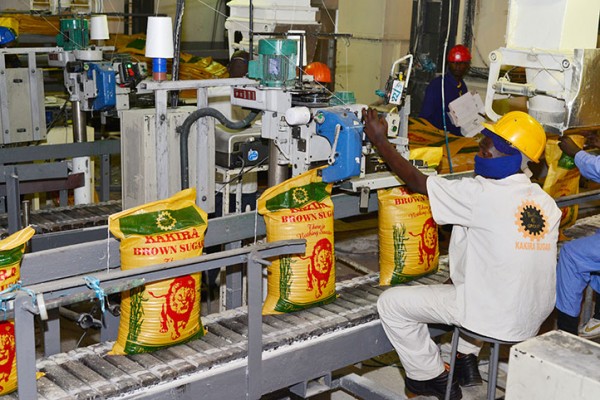When being sworn in as president in 1986, President Yoweri Kaguta Museveni made it clear that their victory was not a mere change of guards, but a fundamental change in his quest for economic transformation.
This envisioned journey has been arduous, dogged by a blend of pitfalls, near misses and fundamental breakthroughs. It has been a balance between trials to test the efficacy of some economic policies that have produced mixed results and application of concrete well primed policies that have resulted in clear success stories. It has been a mixed bag.
From the onset, Museveni had to grapple with hyperinflation that had eroded the value of a shilling to a nearly hopeless proportion. It was not easy, given that naturally it is hard to fight inflation in a situation of scarcity of basic goods in a free market economy, where the forces of demand and supply dictate price. The first instinct, was to reduce both the amount of money in the economy and control the velocity of circulation, to stem the effective demand. So the monetary reforms that led to a 30% knock off every shilling was a deliberate measure to reduce amount of money in circulation and prop the value of the shilling. In the short run, positive results were achieved, but as time went by, it became apparent that the gains of these reforms were being whipped out by the escalating lack of essential commodities. Even with now a stronger shilling, demand inflation persisted, yet the economy was too weak to import the necessities to bridge the gap.
Part of the cause of scarcity was the general decline in industrial output occasioned by economic war declared by Idd Amin on Asian industrialists. When the Asians were expelled, the indigenous people did not have the technical competence to run these industries. The scarcity was further escalated by the economic embargo imposed on Amin’s regime by multinational bodies and governments.

There was a gamble with barter trade, which was short-lived. The international community ganged against the policy calling it outdated. A few deals materialized like the one of Yugoslavia where beans were bartered for Mubende road and Tanzania that supplied transformers in exchange for Maize. These were real challenges that required real actions.
A major decision was taken to privatize most of the parastatals. The argument was that the private sector is better placed to do business than government. It also had mixed results. It turned out that, it was more of the ability to pay for the privatized entities than the technical skills to run them. Most of them went under. Sadly, it was the political class that took over the industries, leaving the business class licking their lips. This was a precursor for disaster as it caused unintended consequences.
Relatedly, it took long for the foreign investors to gain trust in the new government since Museveni had been branded as a Marxist. Foreign countries were jittery about the possible route he would take. The nerves were calmed when he took a decision to return the properties nationalized by Amin.
The much needed industrialization faced two major challenges; electricity and infrastructure. These structural bottlenecks threatened the existence of Investors. There was a lot of load shedding that affected economic activities hence government had to take a decisive step to bring in Aga khan to finance the expansion of Bujagali and Nalubale dams. It was a desperate move that turned out to be costly per unit cost. These have eventually been followed by the construction of Isimba dam and the soon to be launched Karuma dam. It has been a bumpy ride.
The decision to massively invest in infrastructure and power have come off as the magic wand in turning the economy on a transformation path. Small towns have sprouted all over the country, increasing the rate of urbanization, small industries have been established.

The NAADS program had led to bumper harvests, but due to poor road network, there were lots of post-harvest losses. The storage facilities were inadequate yet the ability to convey perishable produce was minimal. The road network was a game changer, mostly the highways. The rural road network remains a challenge, yet the need to deliver produce to urban centers is increasing per harvest season. Local council authorities don’t have enough money to finance feeder road networks. This impacts negatively on farmers who depend on urban markets.
Over the years, Uganda has positioned itself as a regional food basket. This has boosted the market both domestic and regionally. Most countries in the regions look up to Uganda to provide food solution whenever their harvests shrink. This positioning is a direct benefit from deliberate actions in the agriculture sector by government. The recent overdrive in the coffee sector is another initiative to rake in millions through exports.
Peace and security have played a bid role in the economic transformation agenda. This enables local and foreign investments. It gives a sense of hope to do business, otherwise investors are apprehensive to invest in a volatile environment. Northern region that had insecurity for a long time, took a spell to attract investors, but gradually big investments are picking up. The milk industry has developed more than 100% and the call by the president has been value addition. This has made Uganda competitive in both regional and international markets.
However, the biggest achievement has been the fiscal and monetary policy management. The ability to keep inflation at a single digit for long, the ability to maintain fiscal discipline, the increased tax revenues, foreign direct investment, to maintain the exchange rate within manageable limits. These are indicators of economic stability.

However, there still remains challenges in stabilizing the cost of capital. The interest rates are high that discourages investment. The volatility in the foreign exchange market. The value of a shilling is slightly stable, but at a high rate. This naturally affects the businessmen who have to part with colossal amounts local cover to get dollars. Local borrowing by government, crowds out the local businessman who competes for the same source of credit.




